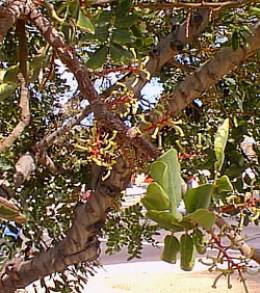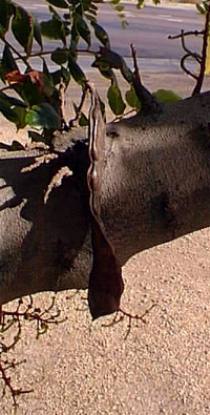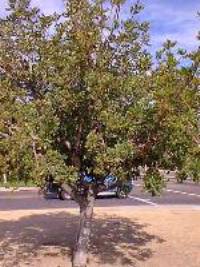Sunset®: 9,13-16,18-24
USDA: 9b-10
Frost Tolerance: Frost hardy in Phoenix except for very young trees, foliage damaged at 25° F (-3.5° C), serious damage at 20° F (-6° C)
Sun Exposure: Full sun
Origin: Middle-East.
Growth Habits: Evergreen large shrub or small tree to 30 feet; dark green pinnately compound leaves.
Watering Needs: Infrequent deep watering, needs more water to have quality pods.
Propagation: Seeds
Propagation: Seed or occasionally cutting, layering, grafting/budding
- by cuttings.
- by layers.
- by grafts.
- by seeds, in spring. The seeds can be harvested in autumn. The seeds need scarification.

Carobs can be male, female or hermaphrodite. Only the female trees produce brown leathery pods (up to 1 foot long) 11 months after pollination. St. John is supposed to have eaten the pods of the Carob. These pods are rich and sugar and are milled as a chocolate substitute. The hard seeds inside the pods are not edible. The pod contains less fat and more vitamins than cocoa, and are sold as cocoa substitute in health stores.
Close up showing the flowers and a fruit pod (pictures taken 1/30/99).

Culture:
The carob is sensitive to Texas root rot and a few other diseases.
Desert-Tropicals is dedicated to provide gardening advice, gardening ideas, and information about flower of all kind for landscape and collections.We try to check carefully the identification of the plants on the illustrations as well as the other information from the page, but occasionally errors do occur. if you notice anything that needs to be changed please contact us.Thanks.
© 1998-2020 Philippe Faucon, All Rights Reserved.
